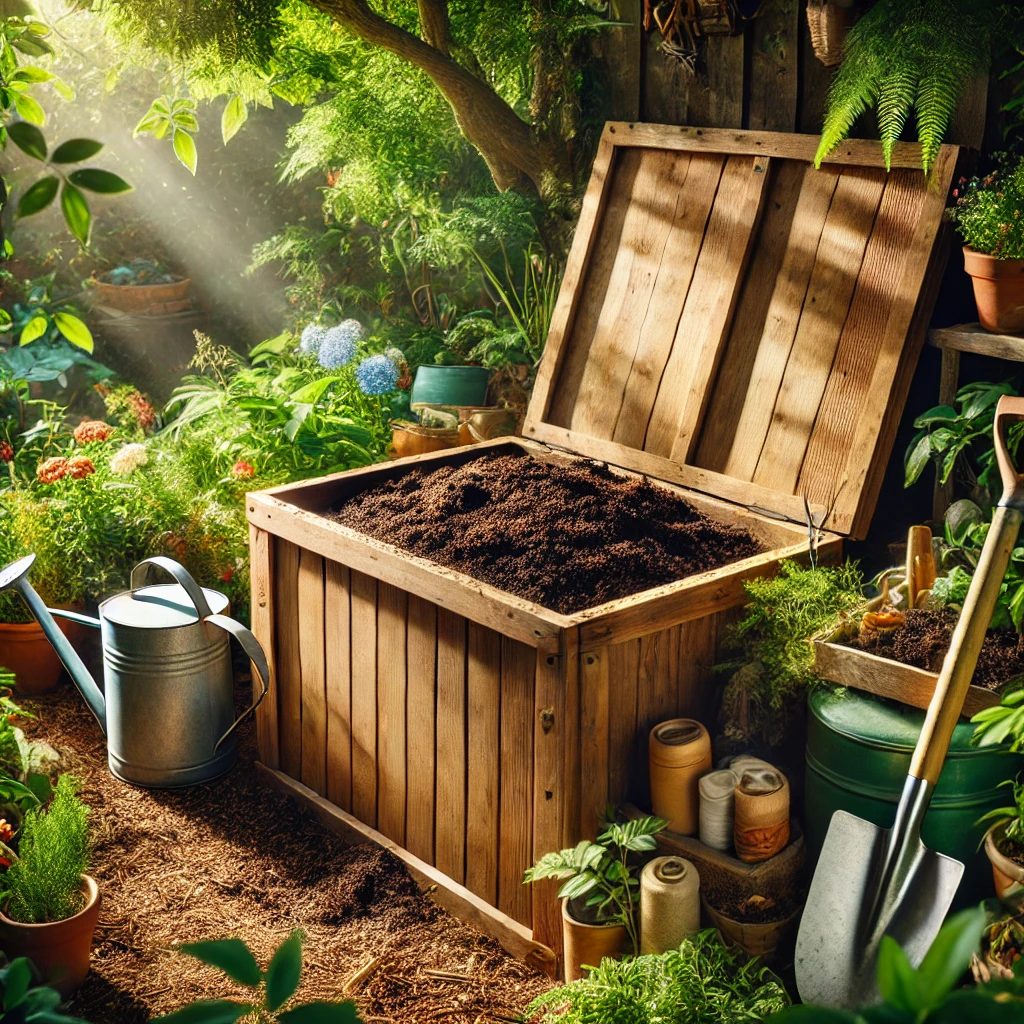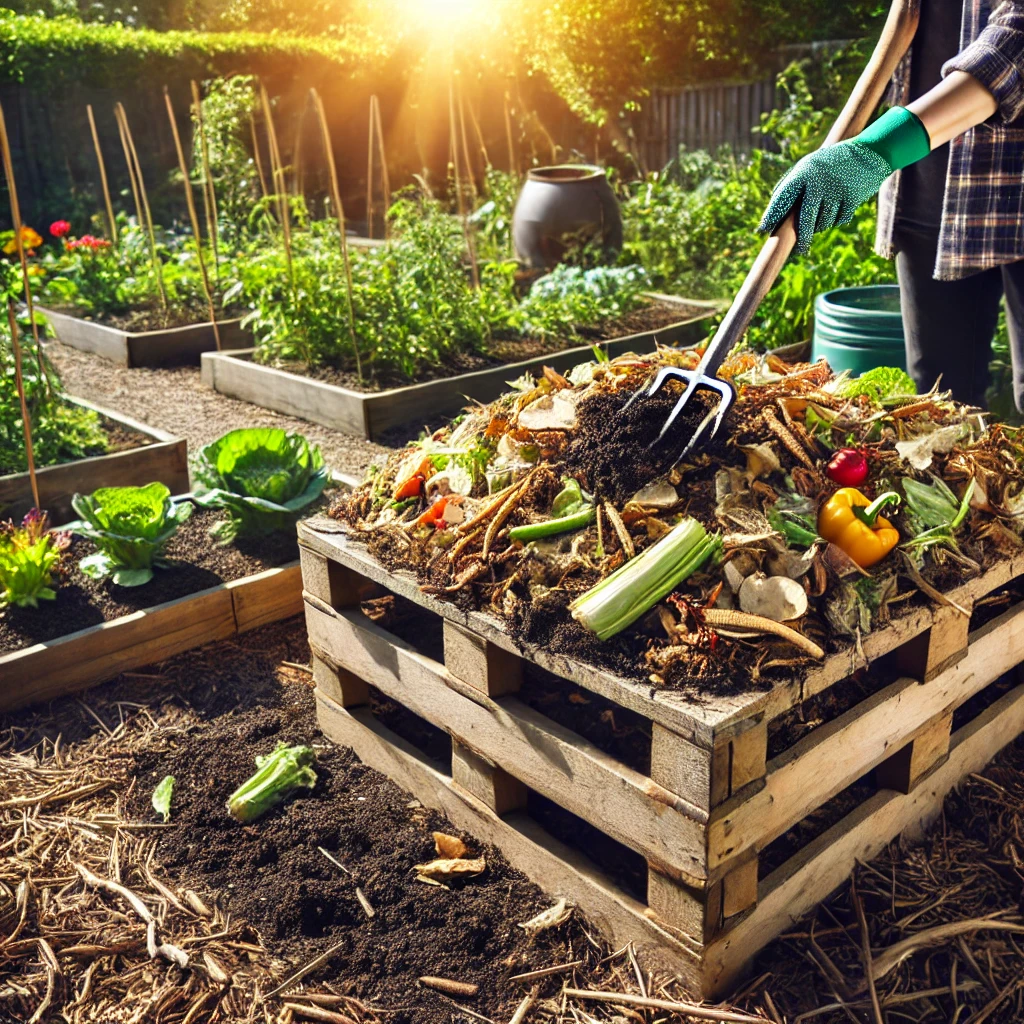
Composting is one of the simplest and most effective ways to reduce household waste while creating nutrient-rich soil for gardening. By recycling organic materials, you can cut down on landfill contributions, reduce greenhouse gas emissions, and improve soil health. Whether you live in an apartment or have a large backyard, composting can be tailored to suit your space and lifestyle.
Understanding the Basics of Composting
Composting is a natural process where organic matter, such as food scraps and yard waste, decomposes into a nutrient-rich substance known as humus. Microorganisms, fungi, and insects break down the organic materials, creating a rich soil amendment that enhances plant growth and retains moisture. To ensure effective composting, you need three main components:
- Greens – These are nitrogen-rich materials like fruit and vegetable scraps, coffee grounds, and grass clippings. They provide essential nutrients for microbial activity and speed up decomposition.
- Browns – These provide carbon and include items like dried leaves, cardboard, paper, and small branches. They help balance the compost pile and prevent excessive moisture, which can lead to odors.
- Water – Proper moisture levels help facilitate decomposition and keep beneficial organisms active. If your compost pile is too dry, decomposition will slow down; if too wet, it may develop an unpleasant smell.
In addition to these core components, composting relies on microorganisms such as bacteria and fungi, along with larger decomposers like worms and insects. These organisms work together to break down organic matter into humus, a nutrient-rich material that enhances soil quality.
A well-balanced compost pile will heat up as microbial activity increases, helping to kill weed seeds and pathogens. Regular aeration and proper layering of greens and browns ensure that your compost remains active and efficient.
Choosing a Composting Method
There are various composting methods depending on the available space and personal preferences. Choosing the right method ensures that composting fits seamlessly into your routine.
- Backyard Composting: Ideal for those with outdoor space, this method involves setting up a compost pile or bin where organic materials are added and turned regularly. Open piles work well for large gardens, while enclosed bins help contain odors and pests.
- Vermicomposting: Uses worms (typically red wigglers) to break down food scraps. This method is excellent for indoor use and small spaces. Worm bins can be placed in basements, garages, or under sinks, making composting accessible for urban dwellers.
- Bokashi Composting: An anaerobic process that ferments food waste using a specialized bran. It is a great option for those with limited space and no outdoor area. Unlike traditional composting, bokashi can handle dairy, meat, and cooked foods.
- Tumbler Composting: A rotating bin that speeds up the decomposition process by regularly aerating the compost. It’s an efficient and low-maintenance option for those who want quick results with minimal effort.
- Trench Composting: A simple method where organic waste is buried directly in garden soil. Over time, the material breaks down and enriches the soil, making it an excellent choice for gardeners looking for a hands-off approach.
Each method has its benefits, and the choice depends on factors such as space, effort, and the type of materials you compost. By selecting the right approach, you can make composting a sustainable and manageable part of your daily life.
What to Compost and What to Avoid
To create high-quality compost, it’s essential to know what materials can and cannot be composted.
| Compostable Items (Yes) | Non-Compostable Items (No) |
|---|---|
| Fruit and vegetable scraps | Meat, fish, and dairy |
| Coffee grounds and filters | Oily or greasy foods |
| Eggshells | Plastic or synthetic materials |
| Yard waste (grass, leaves) | Diseased plants |
| Shredded paper and cardboard | Pet waste |
| Tea bags (non-plastic) | Coal or charcoal ashes |

Maintaining Your Compost
To ensure your compost pile or bin remains healthy and decomposes efficiently, follow these simple tips:
- Balance the Greens and Browns: Aim for a ratio of about 2-3 parts browns to 1 part greens to maintain an ideal carbon-to-nitrogen balance.
- Aerate Regularly: Turn or mix the compost every few weeks to allow oxygen to reach microorganisms and speed up decomposition.
- Monitor Moisture Levels: Compost should be damp, like a wrung-out sponge. If too dry, add water or moist greens; if too wet, add more browns.
- Chop or Shred Materials: Smaller pieces break down faster, so consider chopping up large food scraps or shredding paper before adding them.
- Cover Food Scraps: Always bury fresh food scraps under a layer of browns to prevent odors and deter pests.
Using Finished Compost
After a few months to a year, your compost will be dark, crumbly, and have an earthy smell. Once ready, it can be used in multiple ways to enrich the soil and promote plant health:
- Garden Soil Enrichment: Mix compost into garden beds to improve soil structure, boost microbial activity, and enhance nutrient content. This leads to healthier plants with improved resistance to pests and diseases.
- Lawn Improvement: Spreading a thin layer of compost over your lawn provides essential nutrients and encourages robust grass growth. It also improves soil aeration and water retention, reducing the need for chemical fertilizers.
- Mulching: Applying compost as a top layer around plants helps retain moisture, suppress weeds, and prevent soil erosion. It also adds organic matter back into the soil over time.
- Potting Mix Additive: Blend compost with potting soil for container gardening to provide a balanced and nutrient-rich growing medium for houseplants, herbs, and flowers.
- Compost Tea: Soaking finished compost in water for several days creates a liquid fertilizer known as compost tea. This nutrient-rich solution can be used to water plants, delivering a boost of organic nutrients directly to their roots.
Using compost regularly enhances soil health, reduces reliance on synthetic fertilizers, and promotes sustainable gardening practices. It’s a simple, effective way to recycle organic waste while fostering a thriving garden.
Common Composting Problems and Solutions
| Problem | Cause | Solution |
|---|---|---|
| Bad odor | Too many greens, excess moisture | Add more browns, aerate the pile |
| Pests | Exposed food scraps, meat or dairy added | Bury scraps, avoid non-compostable items |
| Slow decomposition | Lack of aeration or moisture | Turn pile, check moisture levels |
| Mold growth | Normal for decomposition | No action needed unless excessive |
The Environmental Benefits of Composting
By composting at home, you actively reduce the amount of waste sent to landfills, lowering methane emissions—a major contributor to climate change. Additionally, composting helps conserve water by improving soil’s ability to retain moisture and reduces reliance on chemical fertilizers that can harm ecosystems.
Getting Started Today
Starting a composting habit is easier than you think. Begin by setting up a compost bin or pile, learning what materials to include, and maintaining the right conditions. Even small efforts, like vermicomposting in a kitchen container, can make a big impact over time. By taking these simple steps, you contribute to a healthier planet while creating a valuable resource for your plants.
For further reading, check out Wikipedia’s guide on composting and home composting methods.

